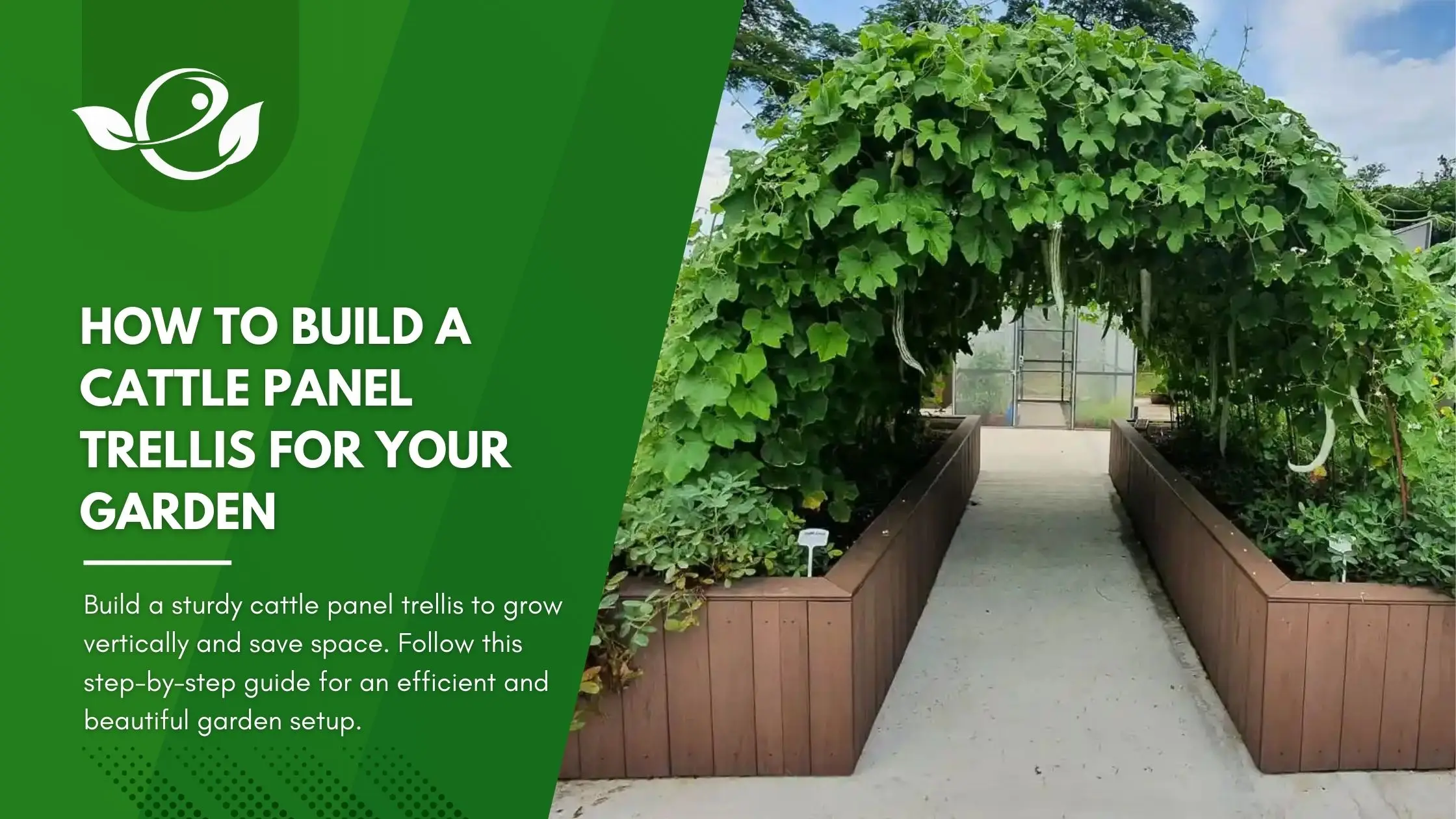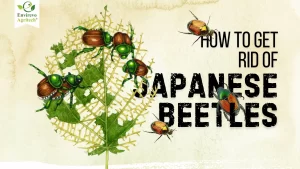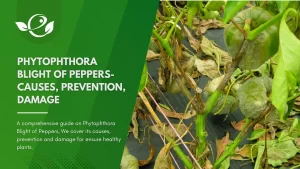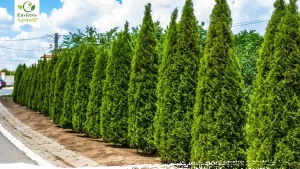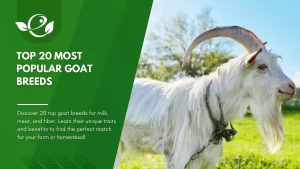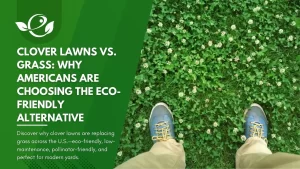Table of Contents
Gardening enthusiasts know that space is often a limiting factor when it comes to growing plants. Whether you’re cultivating vegetables, fruits, or flowers, a cattle panel trellis can help maximize your garden’s potential. This versatile, cost-effective solution allows you to grow plants vertically, improving airflow, light exposure, and accessibility for harvesting. In this comprehensive guide, you’ll learn how to build a cattle panel trellis step by step, along with tips for maintenance and creative applications.
What Is a Cattle Panel Trellis?
A cattle panel trellis is a highly versatile gardening structure crafted from robust wire panels initially developed for containing livestock. These galvanized steel panels are now repurposed as durable supports for climbing plants, offering exceptional stability and adaptability to various garden configurations. With their rigid framework, cattle panels can withstand significant weight, making them ideal for growing heavy-producing crops or ornamental climbers.
Their adaptability allows gardeners to incorporate them into diverse layouts such as arches, A-frames, or straight vertical designs, catering to aesthetic and functional needs. Furthermore, the trellis promotes vertical growth, optimizing space and enhancing overall plant health by improving airflow, light penetration, and accessibility.
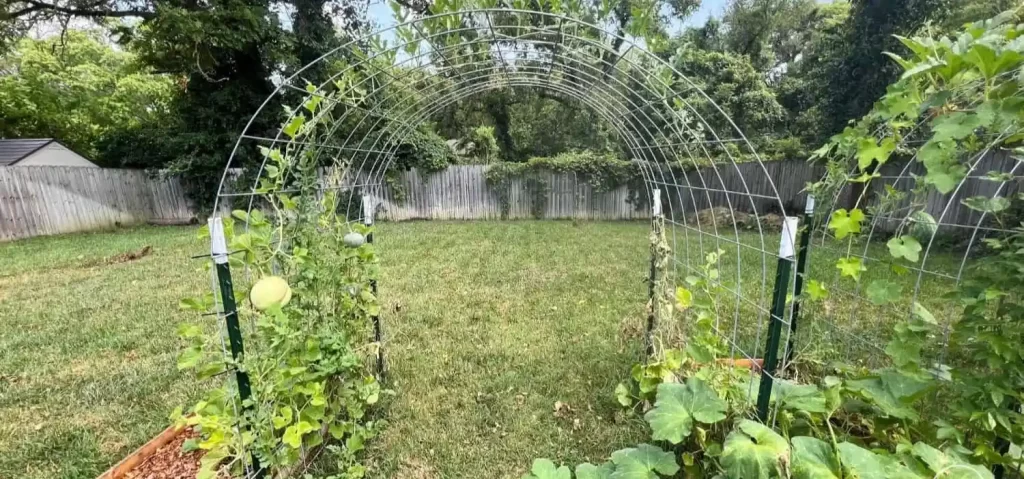
Key Benefits of a Cattle Panel Trellis
- Durability: Made from galvanized steel, cattle panels are rust-resistant and can withstand heavy loads, making them ideal for supporting large plants like melons or gourds.
- Space Optimization: Vertical gardening frees up ground space, making it perfect for small gardens.
- Improved Plant Health: Better airflow reduces the risk of fungal diseases, and easier harvesting minimizes plant damage.
- Versatility: Can be configured in various styles, such as arches, A-frames, or straight panels, to suit different garden designs.
Materials Needed to Build a Cattle Panel Trellis
Building a cattle panel trellis is simple and requires a few key materials:
Materials List
- Cattle Panels: Typically 16 feet long and 4 to 5 feet tall, these panels are made from galvanized steel wire and can be found at most farm supply stores. They come in various gauges to support different plant weights and are cut to size if needed.
- T-Posts or Rebar: These sturdy poles anchor the trellis and provide structural support. T-posts are easier to install due to their flat tops, while rebar offers a sleek look but may require additional securing methods.
- Fasteners: Choose from zip ties, metal clips, or heavy-duty wire to secure the panels to the posts. Metal clips provide a more permanent solution, whereas zip ties are quicker to use and replace.
- Tools: Essential tools include a post driver for setting up the posts, pliers for handling wire, and gloves to protect your hands from sharp panel edges. Wire cutters may also be useful for trimming panels to fit your design.
- Tape measure, 24 Heavy-duty UV-resistant plastic zip ties
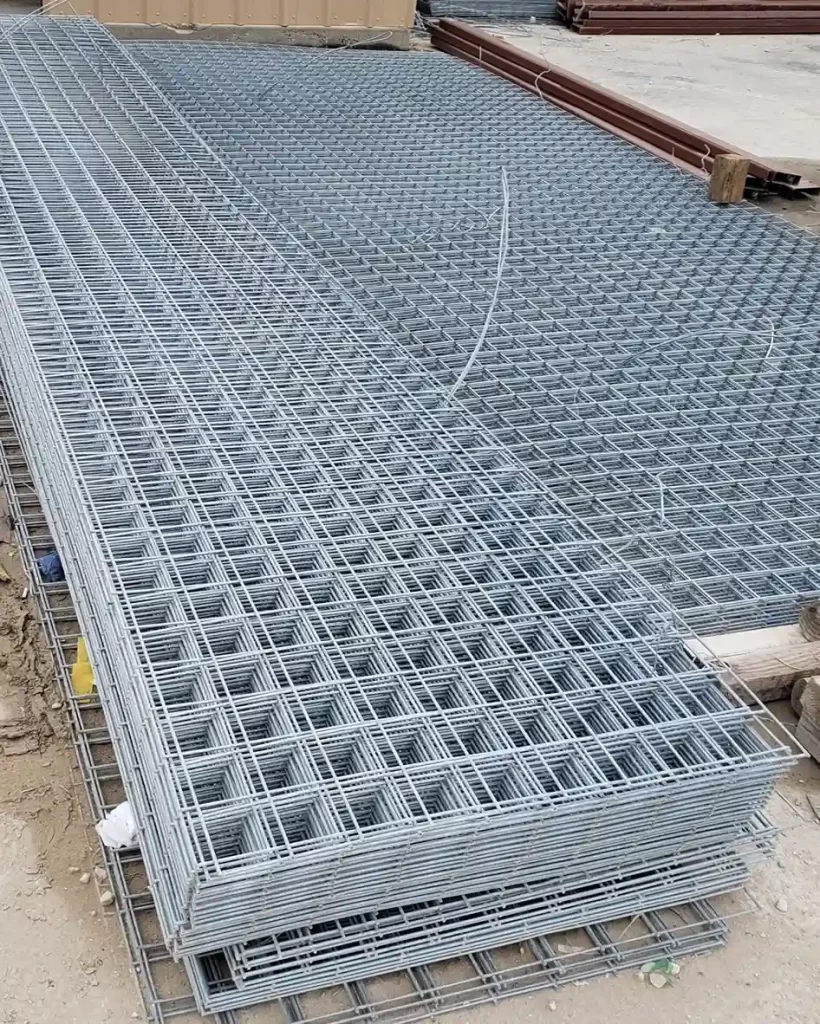
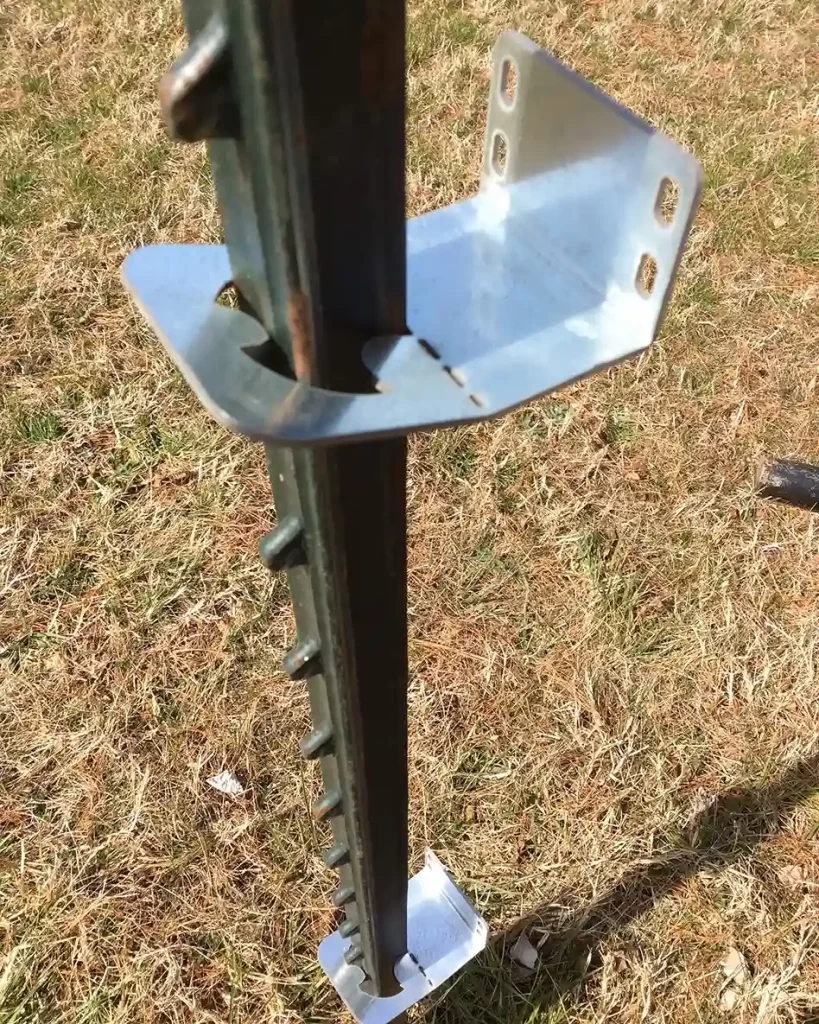
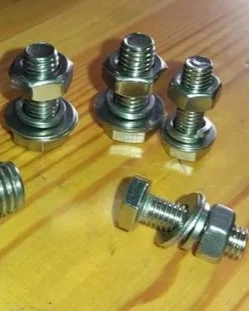
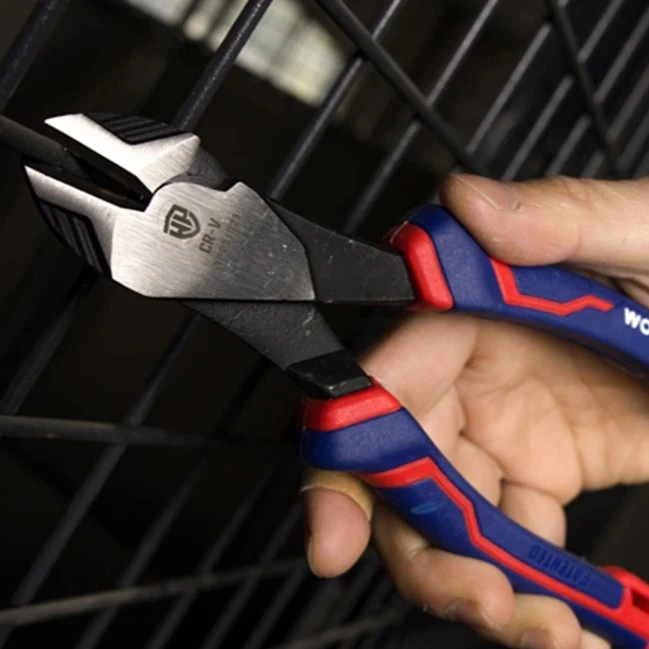
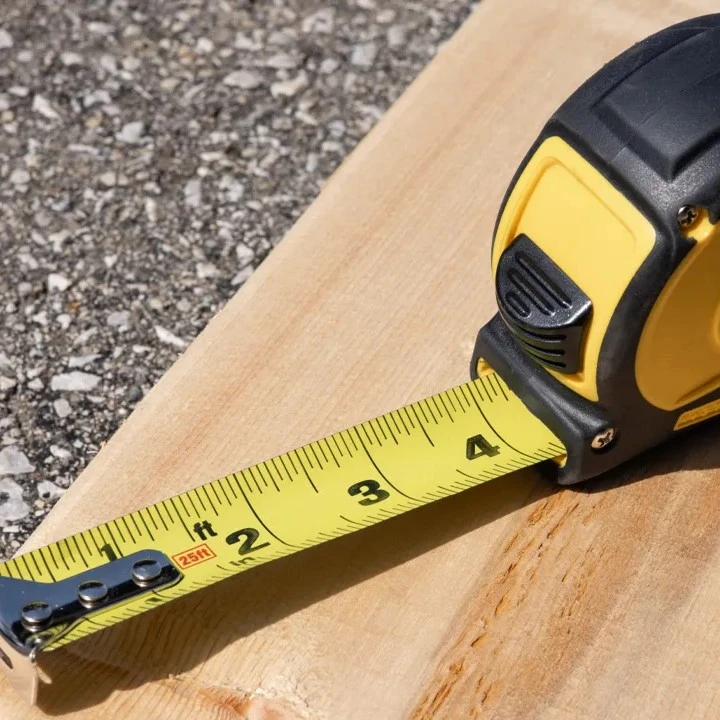
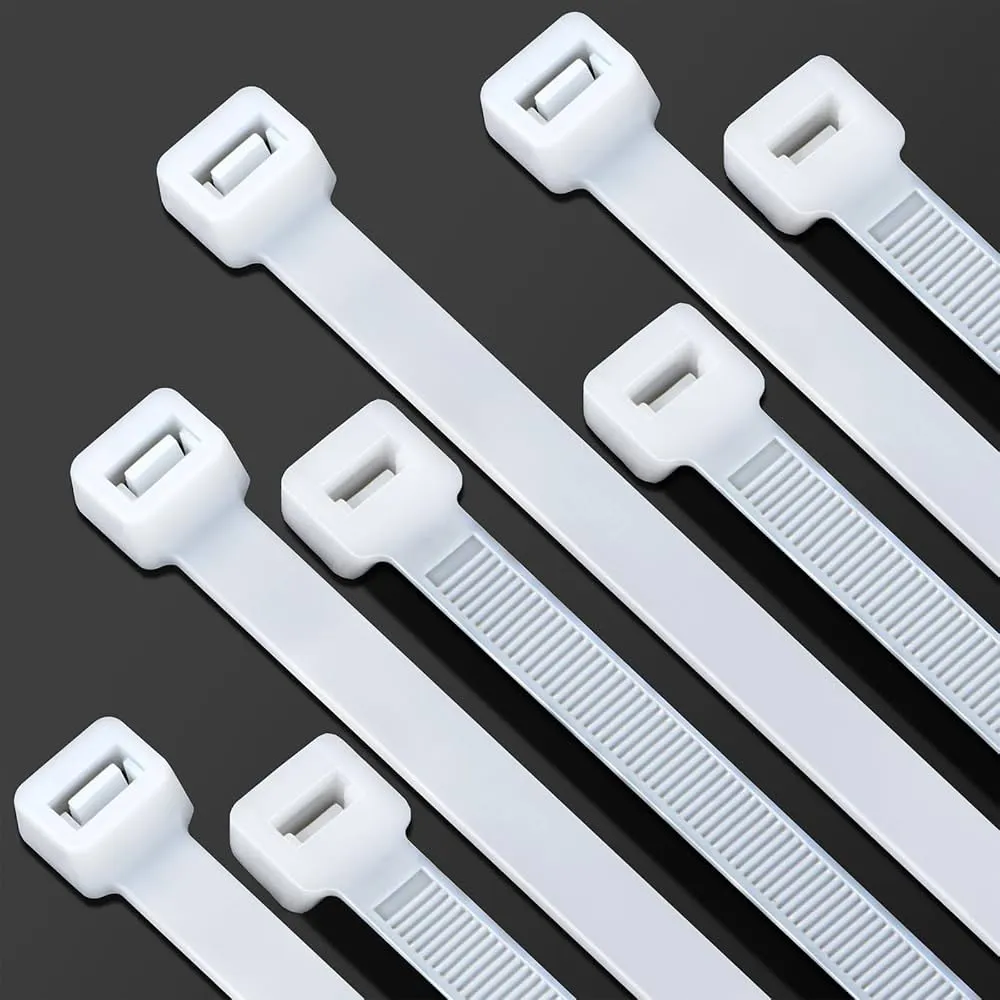
Additional Materials for Customization
- Rust-Proof Coating: Consider applying a rust-resistant spray or paint to extend the lifespan of your trellis, especially in humid climates.
- Decorative Accessories: Twine, netting, or hooks can enhance the trellis’ functionality, particularly for delicate plants or aesthetic purposes.
- Ground Staples: Useful for anchoring the base of the panels if you’re creating arches or free-standing structures.
Cost Considerations
Cattle panels are affordable, with prices ranging from $25 to $50 each, depending on size and gauge. T-posts typically cost $4 to $8 each, while rebar can range from $2 to $5 per piece. Fasteners like zip ties or metal clips are available in bulk for under $10. While the total cost of your trellis will vary based on design and material quality, it’s a cost-effective solution compared to pre-made garden trellises.
Additionally, the longevity of these materials ensures a great return on investment for years of use. Cattle panels are affordable, with prices ranging from $25 to $50 each, depending on size and gauge. The total cost of your trellis will vary based on the design, but it’s a budget-friendly solution compared to pre-made garden trellises.
Step-by-Step Guide to Building a Cattle Panel Trellis
Constructing a cattle panel trellis is a straightforward process, but paying attention to detail ensures a stable and long-lasting structure. Below is a detailed guide to help you build a trellis that meets your gardening needs.
Step 1: Choose the Right Location
- Sunlight: Identify a spot in your garden that receives at least 6-8 hours of direct sunlight daily to support robust plant growth.
- Soil Conditions: Ensure the ground is level and the soil is well-draining to avoid water pooling at the base of the trellis.
- Accessibility: Position the trellis where you can easily tend to your plants and harvest produce.
- Wind Protection: If you live in a windy area, choose a location shielded by natural barriers like hedges or fences.
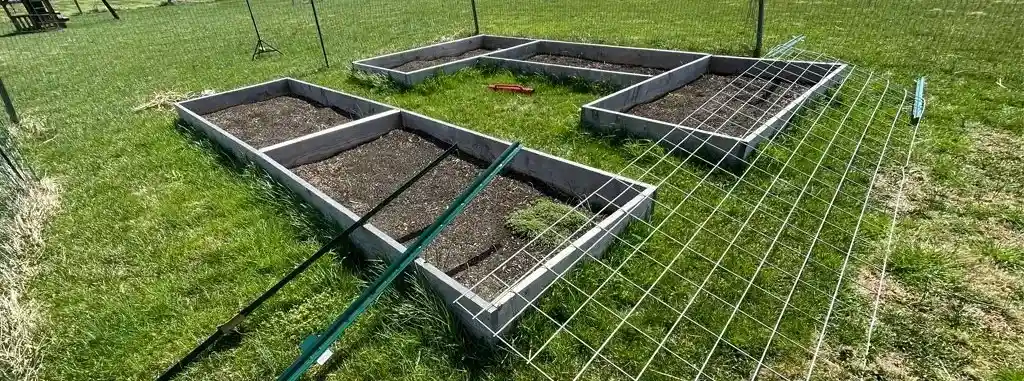
Step 2: Plan Your Trellis Design
- Arch Design: Ideal for creating garden walkways and supporting heavy climbers like gourds or melons. This design adds aesthetic appeal and can act as a shaded retreat.
- A-Frame Design: A sturdy and space-efficient option, perfect for smaller gardens or heavier plants requiring even weight distribution.
- Vertical Design: A simple and effective layout for lining garden beds or fences, great for lightweight climbers like beans and peas.
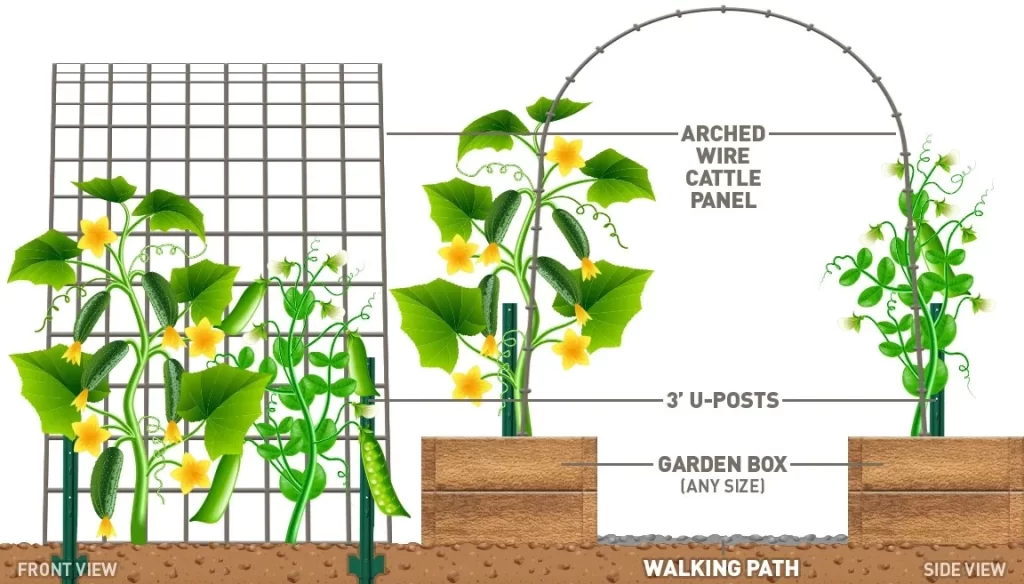
Step 3: Install Support Posts
- Measure and mark the location for the posts, spacing them 4 to 6 feet apart for optimal support.
- Use a post driver to insert T-posts or rebar into the ground to a depth of at least 2 feet, ensuring they remain stable under weight.
- Check the alignment of the posts with a level to prevent uneven pressure on the structure.
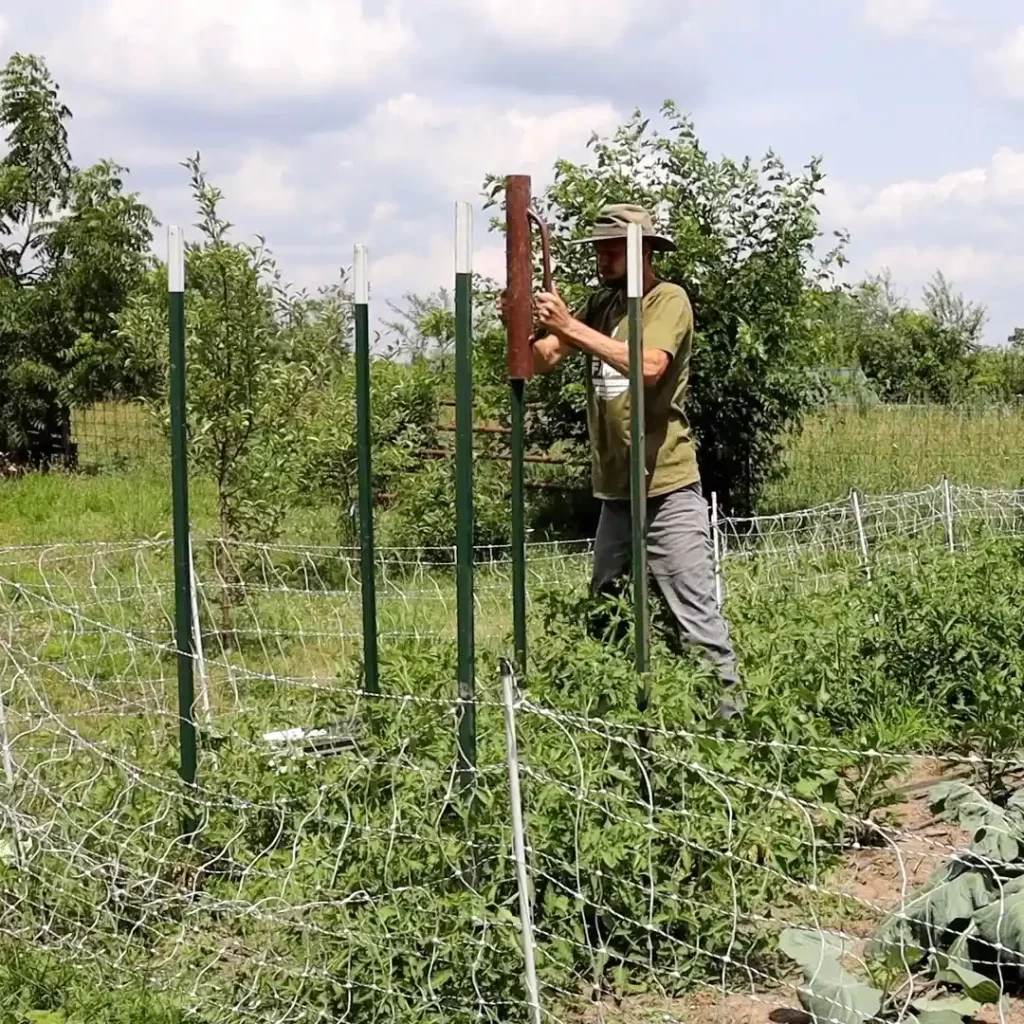
Step 4: Attach the Cattle Panels
- Position the cattle panel against the posts, ensuring it aligns evenly with the ground.
- Secure the panel using heavy-duty zip ties, metal clips, or wire at multiple points along each post to prevent shifting.
- For an arch design, bend the panel carefully to form the desired shape and anchor both ends firmly to the ground or support posts.
- Test the stability of the structure by applying gentle pressure before introducing plants.
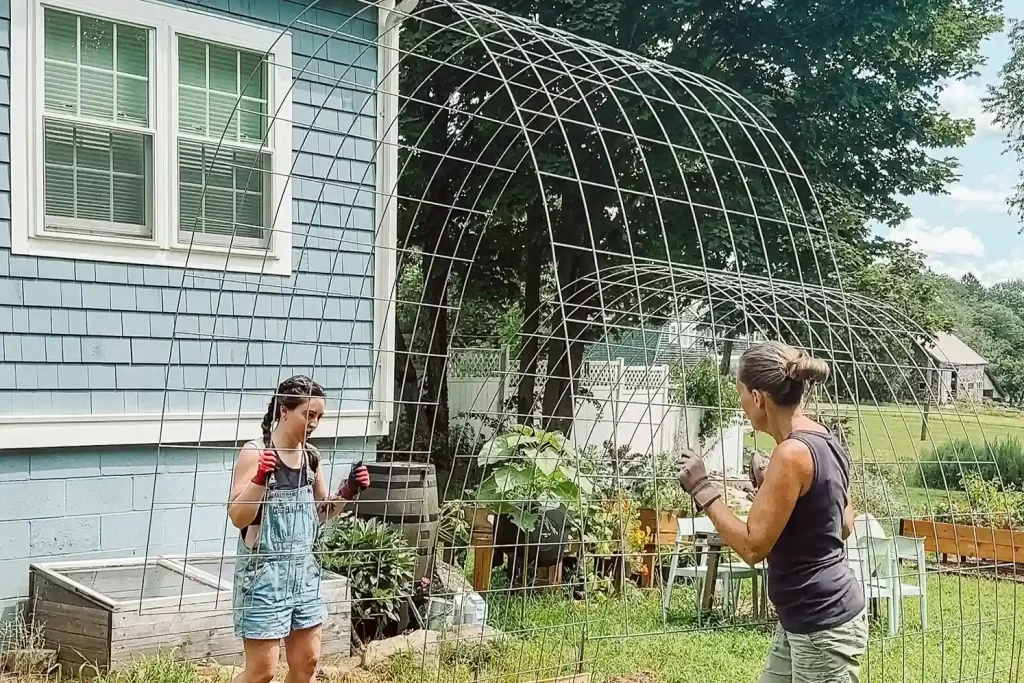
Step 5: Add Finishing Touches
- Safety Measures: Use pliers to smooth any sharp edges on the panels to prevent injuries while working around the trellis.
- Optional Features: Enhance the trellis with twine, netting, or additional wire to create a grid for smaller plants.
- Aesthetic Enhancements: Consider painting or decorating the posts to match your garden’s theme.
This comprehensive process ensures a durable and versatile trellis, ready to support a variety of climbing plants and enhance the productivity of your garden. Follow these steps to construct a sturdy and functional cattle panel trellis for your garden.
Best Plants for a Cattle Panel Trellis
A cattle panel trellis opens up endless possibilities for vertical gardening, allowing you to grow a wide range of plants efficiently. The versatility of this structure makes it suitable for vegetables, fruits, and flowers, each thriving in its unique way when given the support of a sturdy trellis.
Vegetables
Vegetables benefit significantly from vertical gardening as it enhances air circulation, reduces pest infestations, and makes harvesting easier. Popular choices include:
- Cucumbers: These thrive on vertical supports, preventing ground rot and making the fruits easier to pick.
- Pole Beans: These climbers grow prolifically on trellises, increasing yield and saving ground space.
- Tomatoes: Indeterminate varieties, which grow tall and produce fruit over an extended period, are ideal for trellises. The structure helps keep the vines off the ground, reducing the risk of disease.
- Peas: Lightweight and naturally inclined to climb, peas are perfect for cattle panel trellises and yield better when grown vertically.
Fruits
Although not traditionally grown vertically, several fruits adapt well to trellises with proper care. Examples include:
- Melons: Smaller varieties like cantaloupes thrive when supported by slings, which prevent the fruit from breaking off prematurely.
- Squash: Vining types like butternut squash or small pumpkins perform well on trellises, as the structure supports the weight of the fruit.
Flowers
Flowers not only beautify a cattle panel trellis but can also attract pollinators to your garden. Some popular options are:
- Morning Glories: These fast-growing vines produce vibrant blooms that add a splash of color to your garden.
- Sweet Peas: These fragrant flowers climb elegantly, creating a visually stunning and aromatic addition to your trellis.
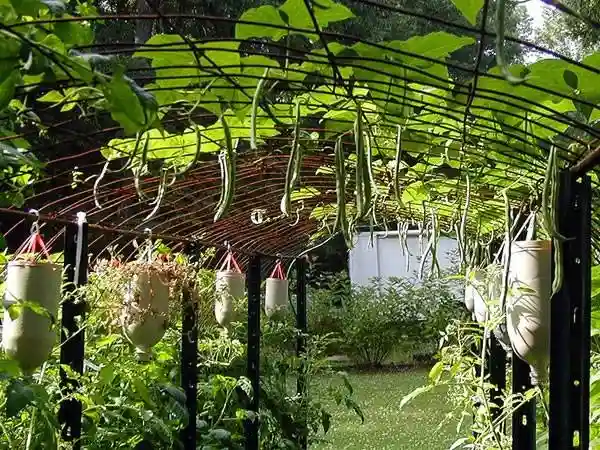
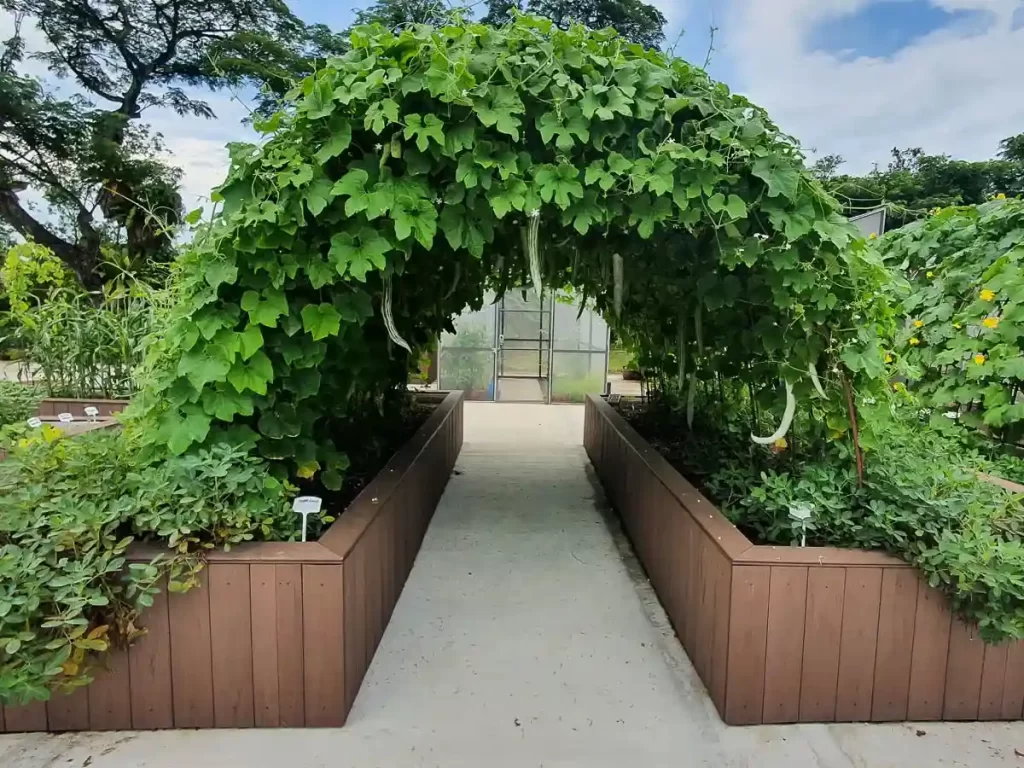
Maintenance Tips for Your Cattle Panel Trellis
To ensure your trellis lasts for years, follow these maintenance tips:
- Stability Checks: Inspect posts and fasteners regularly, tightening or replacing as needed.
- Rust Prevention: Clean panels periodically and apply a rust-resistant coating if necessary.
- Seasonal Care: Dismantle or protect the trellis in harsh winters to prolong its lifespan.
- Reusability: Rotate the trellis for different crops each season to optimize its use.
Creative Ideas for Using Cattle Panel Trellises in Your Garden
Cattle panel trellises aren’t just practical—they can be aesthetically pleasing too:
- Garden Arches: Create picturesque walkways by bending panels into arches and planting flowering vines.
- Privacy Screens: Use panels with dense foliage plants to create natural screens.
- Shaded Walkways: Combine panels and climbing plants to form shaded paths.
- Hanging Decor: Attach hanging planters or fairy lights for a decorative touch.
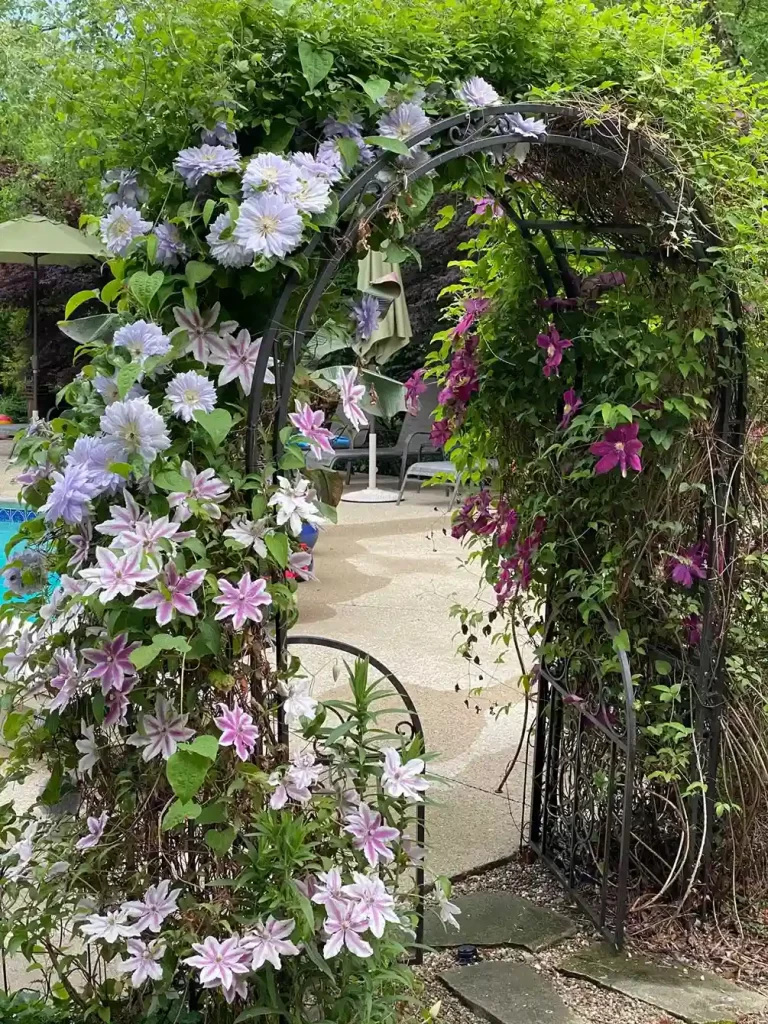
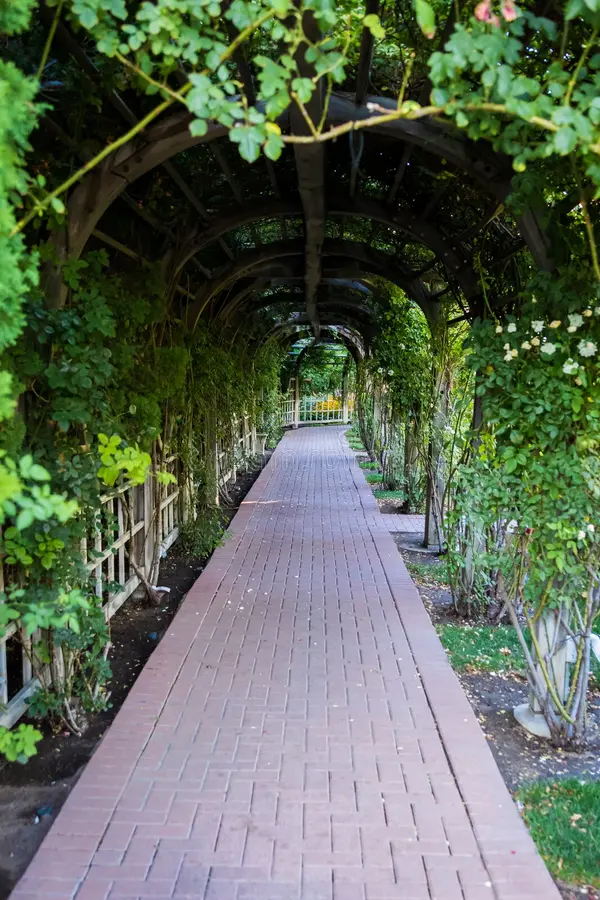
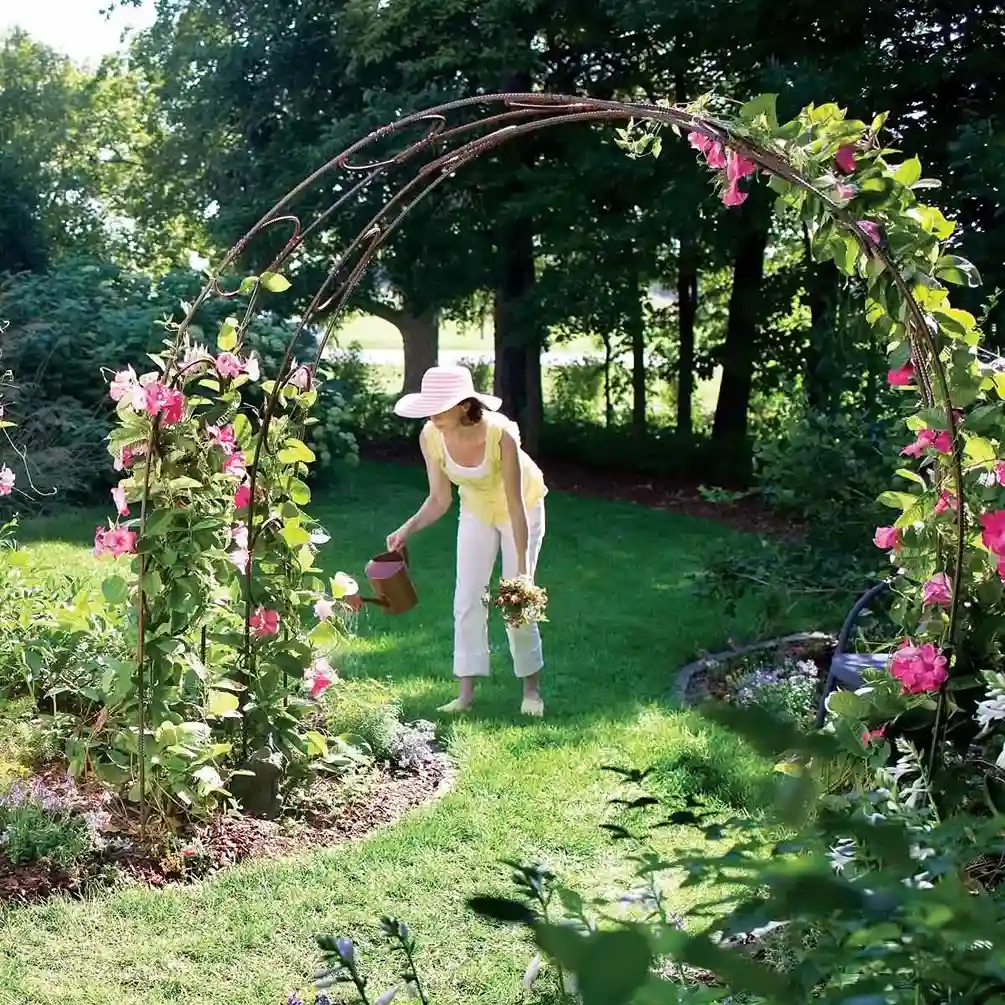
It’s Finished!
A cattle panel trellis is a game-changer for gardeners looking to maximize space, improve plant health, and add visual appeal to their garden. With its durability, versatility, and affordability, it’s an excellent DIY project that suits both novice and experienced gardeners. By following this guide, you can build a trellis that not only supports your plants but enhances your overall gardening experience.
Start building your cattle panel trellis today and enjoy the benefits of vertical gardening! If you have questions or want to share your trellis designs, leave a comment below.
